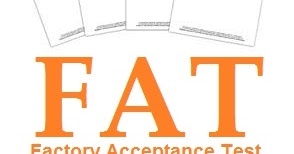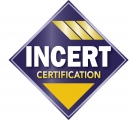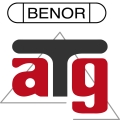
Factory Acceptance Test
A Factory Acceptance Test (FAT) is a validation procedure that ensures that newly manufactured equipment meets the specified requirements before it is delivered to the customer. This step is essential to ensure that the final product meets expectations and will function optimally once installed. Typically, this operation is carried out by quality managers, engineers, operators, or even the company's maintenance personnel.
What are the objectives of a Factory Acceptance Test?
- Verify product compliance with contractual specifications and customer requirements. This includes validating the equipment's functionality, performance, safety, and quality.
- Detect and correct any defects or problems before delivery (such as manufacturing defects, performance problems, etc.). This helps to avoid on-site interventions once the installation is complete.
- Reduce the risks and costs associated with installation and commissioning. A successful Factory Acceptance Test ensures a smooth start-up of the equipment.
- Strengthen the trust between the customer and the supplier. The Factory Acceptance Test allows the customer to ensure that the product they receive meets their expectations and the supplier to demonstrate their expertise and commitment to quality.
How is a Factory Acceptance Test carried out?
There is no single procedure for carrying out this Factory Acceptance Test. Indeed, the procedure for a Factory Acceptance Test may vary depending on the complexity of the equipment and the customer's requirements. However, the following steps are important to consider and must be followed rigorously:
- Planning and preparation: The customer and supplier jointly define the objectives of the FAT, the tests to be carried out, and the acceptance criteria.
- Test execution: The tests are carried out by the supplier, in the presence of the customer or their representatives.
- Analysis of results: The test results are analyzed and documented.
- Corrections and adjustments: If any defects are detected, the supplier takes the necessary steps to correct them before delivery.
- Product acceptance: If the product meets the customer's requirements, it is then accepted and ready for delivery.
What are the key points to remember for a successful Factory Acceptance Test?
- Communication and collaboration: Communication and collaboration between the customer and supplier are essential for a successful FAT.
- Rigor and documentation: The Factory Acceptance Test must be carried out rigorously and documented.
- Flexibility and adaptability: It is important to remain flexible and adaptable to unforeseen circumstances.
Additional points to consider:
- When a kit (combination of components) is to be produced in several dozen copies, the FAT helps to avoid pitfalls after production.
- When production takes place in a country other than the one where the equipment will be installed, the FAT ensures that the desired performance and functionalities will be obtained
- For a custom-made dedicated assembly (control panel) for a given application, the FAT guarantees that all functionalities will be tested and guaranteed before delivery to the operating site.
- The FAT allows for a quick assembly with the expected functionalities without compromise during the realization on the customer's site, whether it is hardware or software.
- Proper preparation of the FAT is the key to its success. It is necessary to plan in advance an action plan, functional tests and the analyses to be carried out in the factory; to anticipate what could disrupt the proper functioning of the system (simultaneous, contradictory commands, etc.) and to test these situations.
- Document all evaluations and tests carried out, examine the procedures in order to identify any flaws, and document the flaws well to verify that they do not reappear on other samples. It is easier to correct a defect before production.
- A quality FAT is the key to a quick and trouble-free SAT (Site Acceptance Test), and therefore helps to avoid unplanned costs and delays.
How can ANPI help you carry out this test?
ANPI stands out for its technical expertise and independence, which allows it to effectively represent the interests of the parties involved in the process. Whether by reinforcing existing positions or replacing one of the parties, our involvement guarantees a proactive and balanced management of the stakes. If you wish to benefit from our know-how to carry out these tests successfully, we invite you to contact us without hesitation at the following address: info@anpi.be.






